Content
Free online spreadsheet for managing the family budget. Managing your construction budget has never been easier. Avoid budget overruns with Jotform’s free online Construction Budget Template. Manage your travel budget in a free online spreadsheet. Get a close-up view of how accounting on Salesforce can eliminate the need for costly integrations—and silos of mismatched information—by sharing the same database as your CRM.
- Current liabilities are debts due within one year or one operating cycle, whichever is longer.
- The term cash normally includes cash equivalents.
- Once the information has been entered into the correct categories, you’ll add each category or classification individually.
- It reinforces what has been learned in previous chapters and introduces the classification or grouping of accounts on the balance sheet.
- Debt and equity investments classified as trading securities are those which were bought for the purpose of selling them within a short time of their purchase.
A https://www.digitalconnectmag.com/a-deep-dive-into-law-firm-bookkeeping/ is a type of balance sheet presented so that the sub-components of assets, liabilities, and equity are presented so that the readers understand the items of the financial statements. Current liabilities are debts due within one year or one operating cycle, whichever is longer. The payment of current liabilities normally requires the use of current assets. Balance sheets list current liabilities in the order they must be paid; the sooner a liability must be paid, the earlier it is listed. This chapter will explain the steps required to complete the accounting
cycle. This includes understanding the full accounting information
cycle, and what is used to create the financial statements that will be
provided to required and interested stakeholders.
Overview: What is a classified balance sheet?
Liquidity means the ease with which an asset can be converted into cash, with cash being the most liquid asset. In the classified balance sheet, the most liquid assets go first and the least liquid assets go last. Liabilities are categorized in the order of the due date. Liabilities that are due within one year, usually called current liabilities, are listed first and long-term liabilities, due in over one year are listed last. This format is important because it gives end users more information about the company and its operations. Creditors and investors can use these categories in their financial analysis of the business.
This term indicates the possibility that the company may not collect some of its accounts receivable. In the balance sheet, the accounts receivable amount is the sum of the individual accounts receivable from customers shown in a subsidiary ledger or file. Exhibit 26, shows a slightly revised classified balance sheet for The Home Depot, Inc., and subsidiaries.
What are some examples of classified balance sheet items?
Stockholders’ equity is the same in a Navigating Law Firm Bookkeeping: Exploring Industry-Specific Insights as in an unclassified balance sheet. Later chapters describe further subdivisions of the stockholders’ equity section. A classified balance sheet is a financial statement that separates a company’s assets and liabilities into different categories. This allows investors, creditors, and other interested parties to quickly see how much debt the company has its liquidity position and the value of its assets. The most common classifications are current assets, fixed assets, intangible assets, and shareholders’ equity.
This method enables financial professionals to better organize these different account types and monitor how each affects the budget. Additionally, return on investment can be pinpointed more efficiently. There are no set criteria on how many sub-categories can be created and it will ultimately depend on what level of detail is required by the management. The two most common categories that are used in a classified balance sheet are current and long-term.
Classified Balance Sheet Components
The Fixed Assets category lists items such as land or a building, while assets that don’t fit into typical categories are placed in the Other Assets category. Here is how a classified balance sheet normally looks. Track your company budget in a free all-in-one online workspace. Manage your living expenses online with this free Household Budget Template. Create a budget for your business startup in minutes with our free online spreadsheet. Track your weekly expenses with this free online budget spreadsheet.
To determine whether or not this is acceptable, a look at industry standards and an evaluation of the specific assets would be in order. For example, a look at the situation of the subsidiary LMN, whose situation was evaluated in example one, might cause a sigh of relief since, clearly, the subsidiary’s cash situation is ideal. Further analysis of the patent could corroborate this or inspire the opposite. It all depends on the specifics of the situation. Without a look at the classified balance sheet, it would have been difficult to assess the company’s situation and determine the points of greatest concern.
Long-term assets are assets that a business has on hand or uses for a relatively long time. Examples include property, plant, and equipment; long-term investments; and intangible assets. A classified balance sheet helps organize and categorize a company’s financial information into relevant sections, providing a clearer picture of its financial position and aiding in financial analysis. When the balance is a net loss, it is subtracted from stockholders’ equity. The liquidity situation for XYZ, Inc. appears dire. The company seems to be strapped for cash because the vast majority of its substantial holdings are in non-liquid assets, specifically patents and subsidiary company stock.
